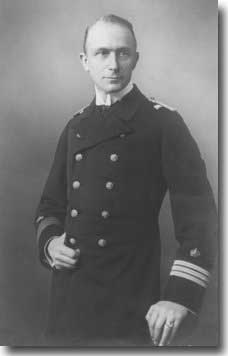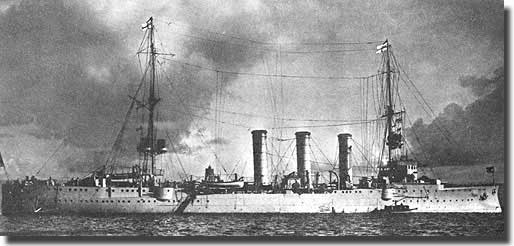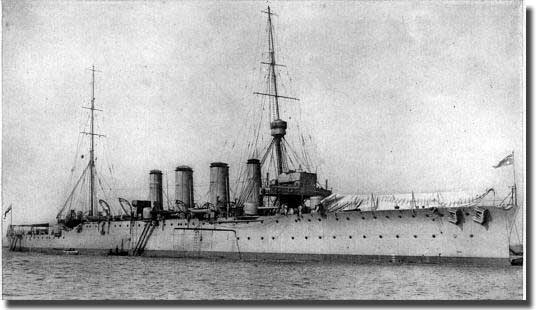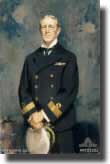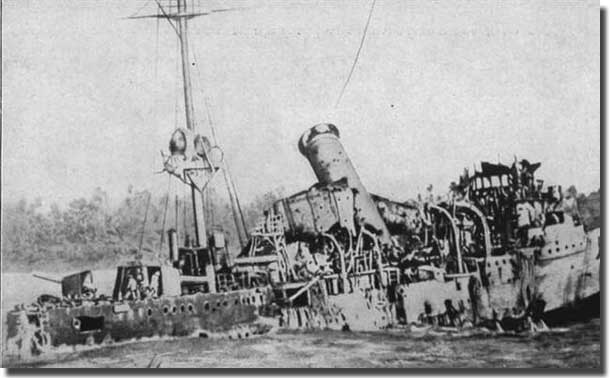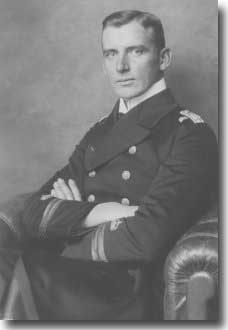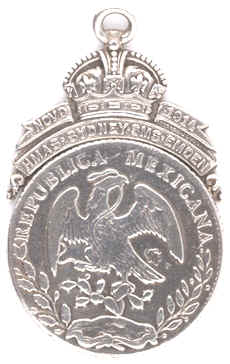|
German WW1 Light Cruiser SMS Emden versus HMAS Sydney
Introduction.
Emden's Fregattenkapitan. von Muller The Scourge of the Indian Ocean. By the 8th. of October, Emden had sailed eastwards, eluding her pursuers, to reach Panang in Malaya, here she found the Russian cruiser Zemtchug, closing her, and soon sending her to the bottom, exiting the harbour, the French destroyer Mouquet was encountered and disposed of.
SMS Emden Direction Island in the Cocos Group. However, before the landing party got ashore, one of the radio operators sent off a warning message: " Emden Here." Once ashore, this quite large body of men were dismayed to note that their cruiser was fast disappearing from view with an enemy cruiser in pursuit. What the German Captain could not know, was that the 1st. ANZAC convoy of some 38 ships with 20,000 troops from both New Zealand and Australia would steam within 80 kilometres of Direction Island, on its way to the war zone in Europe. They were escorted by the Royal Navy heavy cruiser Minotaur, the Japanese battlecruiser Ibuki, and the RAN light cruisers, Melbourne and Sydney, the latter was detached with orders to " Go and Investigate."
HMAS Sydney, the first RAN ship to carry this famous name Sydney versus Emden. Captain John Glossop RN was in command of Sydney, when the German ship sighted her smoke which was taken mistakenly as coming from her captured British Collier SS Buresk, which had been ordered to stand off the Islands whilst the shore party went into action against the Cable Station. But as soon as Sydney's masts became visible over the horizon, von Muller knew he had to fight.
John Glossop Captain of HMAS Sydney who defeated SMS Emden. At the range of 10,500 yards, Emden at 0940 ( 9.40 AM ) was the first to open fire, she had soon hit the enemy 15 times, but fortunately for Sydney, only 5 of these shells exploded. To suit her heavier fire power, both in shell weight ( 100 pounds opposed to the German's 38 pound shell ) and distance they could be hurled, Sydney opened the range, her gunfire began to take its toll. She destroyed the German cruiser's radio installation, wrecked her steering gear, and cut the voice pipe communication between the bridge and the guns. The forward funnel was shot away, and the foremast suffered the same fate, with it, the main fire control equipment was put out of action. A shell burst in the aft magazine, forcing it to be flooded, at a range of 5,500 yards Sydney fired a torpedo, although accurate regarding direction, it did not cover the full distance between the two ships, and the German escaped being torpedoed. The German cruiser now lost its second funnel, and her engine room was ablaze, and the third funnel followed its two mates, to be shot away. At 1120 ( 112.20AM ) to prevent further carnage to his crew, von Muller ran his ship onto the reef, Sydney's casualities: 4 dead, 11 wounded. Emden: 134 killed, 65 wounded, there was a shortage of sailors to fight the ship, remembering the 50 ashore on Direction Island.
Emden destroyed in her fight with Sydney Sydney chases Collier Buresk. The Australian ship now returned to the scene of Emden run ashore upon the reef and by 1620 ( 4.20PM ) noting that the German colours still flying, opened fire, they were soon lowered. At 1635 ( 4.35 PM ) the German ship surrendered by displaying a white flag. The first battle of an infant Royal Australian Navy had been won, but 13 months after the Australian Fleet had entered Sydney Harbour for the first time. Escape of the landing party.
Kapitanleutnant von Mucke who led the landing party to safety to Constantinople, Using horses, and mules they journeyed up the Arabian Peninsula, but were forced to make their way back into Hodieda.Manning two zambucks ( like an Arab dhow ) they continued, but one craft was sunk, and both British and French forces needed to be evaded. Landing once more, the party took to camels to travel to Djeddah, one being killed in a fight against Bedouins, finally Arab troops sent by the Emir of Mecca rescued them to allow them to travel through Syria to reach Constantinople, but 2 days short of a 6 month saga since escaping from Direction Island. On being greeted by a German Admiral, von Mucke saluted, saying
The HMAS Sydney-SMS Emden Medal
HMAS Sydney/SMS Emden Medal produced by Sydney Jeweller 1919, In 1918 1000 coins were mounted by the Sydney jeweller W Kerr and presented by Captain John C.T. Glossop to the officers and men of the Sydney who were on board at the time of the engagement. Others were given to the staff on Cocos Island as well as the Admiralty, the Australian War Museum and other approved museums. The remainder were sold to the public. Of the remaining un-mounted coins 653 were distributed by the Department of Navy, 343 were sold to the public and 4433 were melted down and the money used by the RAN Relief fund. Silver; Unofficial medal made from a silver Mexican dollar and surmounted by a King's crown and scroll. The obverse of the dollar shows an eagle surrounded by a wreath and the words 'REPUBLICA MEXICANA'. The scrolls on the fitting above read 'NOV 1914' and HMAS SYDNEY SMS EMDEN'. The reverse of the coin shows a liberty cap surrounded by stylised sun rays. Treasury details are located around the rim. The reverse of the fitting is marked with the maker's name, " 'W Kerr Sydney" and engraved with " H.T.Bird 2062 RAN." |

